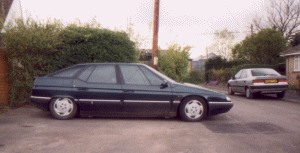The main problem on Citroens with hydraulic suspension is the hydraulic lines, when they rust out they can be hideously expensive to replace.
Yes you can change the ride height but (if it's like my BXs) there's 4 positions - from front to back: minimum (all the pressure's out of the system, you don't want to drive it like this! Gives clampers a headache though

); normal; high (gives good ground clearance, again low speed & short distances); max (system fully pressurised, mainly for maintenance, system will be rock hard and jolt the teeth out of your head if you try to drive it like this!)
The spheres contain a pressurised gas (nitrogen? Can't remember) behind a diaphragm, they loose pressure over time and need to be re-pressurised/replaced occasionally. Citroen have designed them so they self-destruct if all the pressure goes out of them.
All the hydraulics on the car run off the same system, I seem to recall stuff like under heavy braking the transfer of weight to the front spheres forces more pressure into the braking system. Scarily, if the system de-pressurises while you're driving for any reason you'll loose all the hydraulics - car on bumpstops, no power steering and NO BRAKES!
If the spheres on the suspension are de-pressurised the suspension will be rock hard and if the accumulator sphere is de-pressurised you get the distinctive
click, click, click as the pump tries to maintain the pressure. These clicks are something like a couple of hundred bar so they also put a huge strain on the system.
Hmm, that's about all I remember, did I get anything right? I'm sure there's masses on Wikipedia and I reckon it'd be well worth tracking down the owner's club (I'm sure there'll be one) to have a squint on their forums.
My bro had 2 Xantias which he loved, I don't remember him having many problems apart from the driver's door falling off one of them







